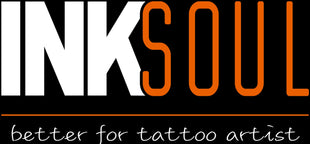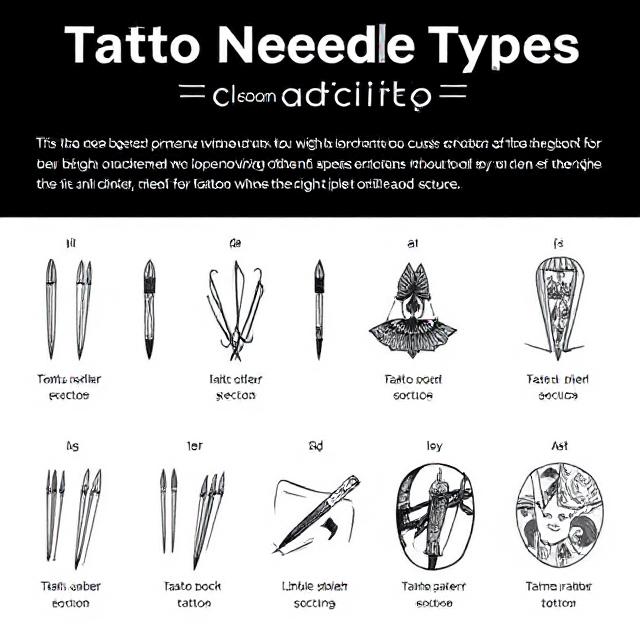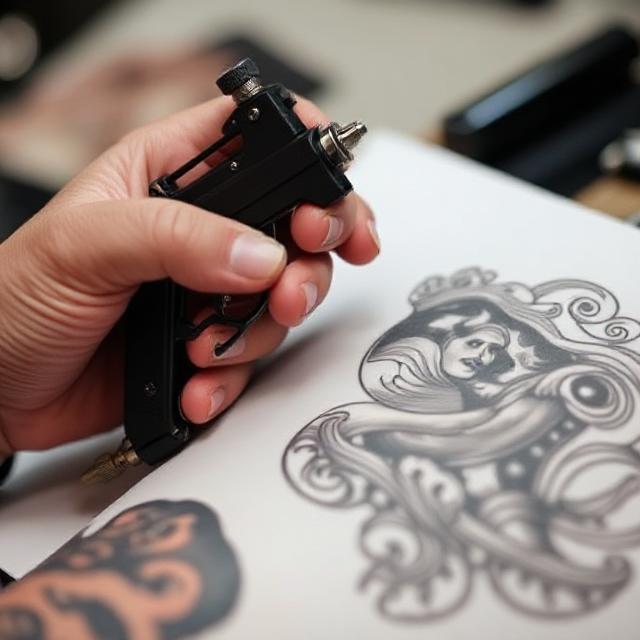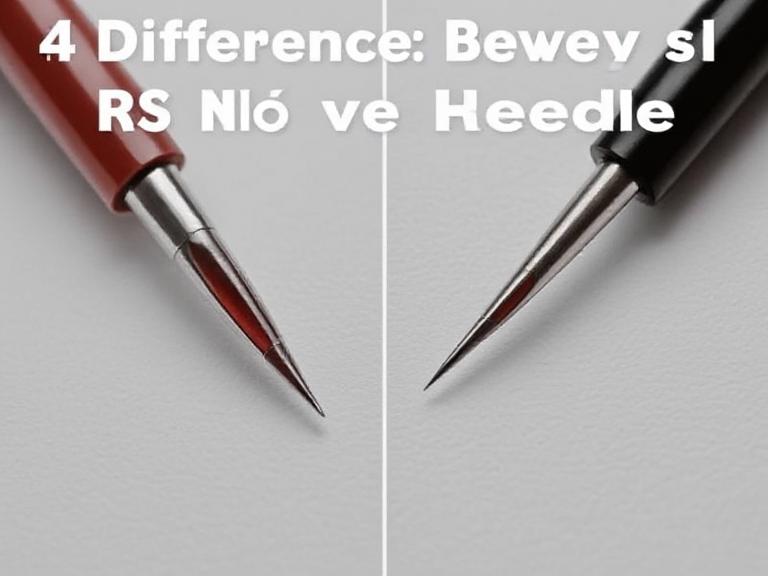Whether you’re a beginner or a seasoned tattoo artist, understanding tattoo needle types is essential to mastering your craft. From crisp linework to smooth shading, the needle you choose defines your technique, precision, and the client’s comfort. This comprehensive guide breaks down every major tattoo needle type, their uses, configurations, and how to select the right one for your work — all backed by expert insights from INKSOUL, a global leader in tattoo supplies and technology.

Table of Contents
Welcome to INKSOUL

INKSOUL is dedicated to empowering tattoo artists with high-performance, reliable tools. Serving both retail and wholesale clients worldwide, the brand is trusted by professionals for its attention to quality, compliance, and innovation.
Why Artists Choose INKSOUL
- Quality You Can Trust: Strict sourcing and testing ensure safety and consistency, complying with global hygiene standards.
- Innovation & Variety: From advanced stencil printers to cartridge needles, INKSOUL stays ahead of tattoo tech trends.
- Customer-Centric Service: Fast shipping, wholesale pricing, and knowledgeable support for all artists.
Complete Product Range
- Tattoo Machines: Rotary and coil machines for lining, shading, and color work.
- Tattoo Needles: Round liners, shaders, magnums, curved magnums, and cartridges.
- Tattoo Transfer Printers: Thermal and wireless models for precise stencils (e.g., INKSOUL T08FS, Phomemo TP31, XIRU XR3).
- Stencil Paper & Lighting: Smudge-free transfer paper and professional LED lighting for color accuracy.
Overview: What Are Tattoo Needles?
A tattoo needle is a grouping of fine metal pins soldered onto a bar that moves rapidly up and down to puncture the skin and insert ink. These groupings differ in number, arrangement, and diameter — all affecting the style and outcome of a tattoo.
Understanding the different types helps you select the perfect configuration for linework, shading, and color blending.
Main Tattoo Needle Types
1. Round Liner (RL)
Round liners feature pins arranged in a tight circle, designed to create crisp, precise lines. They’re ideal for outlining and intricate detailing.
- Best for: Fine lines, outlines, script tattoos.
- Typical Sizes: 3RL, 5RL, 7RL.
2. Round Shader (RS)
Round shaders have pins grouped slightly farther apart than liners, allowing for softer shading and color fills.
- Best for: Small areas of shading or color blending.
- Typical Sizes: 5RS, 9RS, 11RS.
3. Magnum (M1)
Magnums are flat, stacked configurations used for color packing and gradient shading. Their wider surface distributes ink efficiently over large areas.
- Best for: Color fills, smooth gradients.
- Typical Sizes: 7M1, 13M1, 15M1.
4. Curved Magnum (RM)
Curved magnums feature a gentle arc, reducing skin trauma while ensuring smooth shading transitions. Artists love them for realism and portrait work.
- Best for: Portraits, soft shading, realism.
- Typical Sizes: 7RM, 9RM, 15RM.
5. Flat (F)
Flat needles have pins arranged in a straight line. They deliver bold, consistent lines and are often used for geometric or tribal tattoos.
- Best for: Line work, geometric, blackwork.
- Typical Sizes: 5F, 7F, 9F.
6. Cartridge Needles

Modern tattooing often uses cartridge systems — disposable modules that integrate the needle and tip. These systems allow fast needle changes and maintain hygiene.
- Best for: Multi-style artists, convenience, hygiene.
- Types: RL, RS, M1, RM configurations in cartridge form.
Needle Configurations Explained
Every needle grouping comes in different configurations and diameters, which affect ink flow and depth.
Common Terms to Know
- Diameter (Gauge): Measured in millimeters (e.g., 0.25mm = #08, 0.30mm = #10, 0.35mm = #12). Thinner needles create finer lines.
- Taper: The length of the needle tip. Longer tapers allow more control and softer shading.
- Configuration Code: Example “1207RL” means #12 (0.35mm), 7 needles, Round Liner configuration.
Choosing Based on Style
- Fine Line Work: 3RL, 5RL with long taper.
- Traditional Bold Lines: 9RL, 14RL with medium taper.
- Soft Shading: 7M1 or 9RM.
- Color Packing: 13M1 or 15RM for faster coverage.
How to Choose the Right Tattoo Needle
Selecting the right tattoo needle depends on your style, ink type, and skin texture. Here are the key factors to consider:
- Design Style: Linework needs liners; color realism needs magnums.
- Skin Sensitivity: Curved magnums reduce trauma for delicate skin.
- Ink Flow: Thicker needles hold more ink but penetrate deeper.
- Machine Type: Match needle configuration to your rotary or coil machine.
Pro Tip: Always practice with different configurations to understand how ink flow and hand speed interact with each type.
Why Quality Matters: INKSOUL’s Commitment
Not all needles are created equal. INKSOUL ensures that each product meets international safety and hygiene standards. Needles are precision-tested to ensure consistency, sharpness, and smooth ink delivery.
INKSOUL’s Core Values
- Quality Assurance: Each batch undergoes rigorous inspection for tip alignment and sterilization.
- Innovation: Constant updates in materials and configurations to match evolving artist needs.
- Support: Expert guidance for professionals and beginners alike.
Summary Table: Tattoo Needle Types & Uses
| Needle Type | Configuration | Best For | Example Size |
|---|---|---|---|
| Round Liner (RL) | Tight circular grouping | Outlines, precision linework | 5RL, 9RL |
| Round Shader (RS) | Wider circular spacing | Small shading areas, color fills | 7RS, 11RS |
| Flat (F) | Linear grouping | Bold lines, geometric tattoos | 5F, 9F |
| Magnum (M1) | Stacked flat rows | Large color fills, gradients | 13M1, 15M1 |
| Curved Magnum (RM) | Curved edge layout | Soft shading, realism | 9RM, 15RM |
| Cartridge | Integrated modular system | Quick swaps, hygiene | Varies |
Frequently Asked Questions (FAQs)
1. What’s the difference between RL and RS?
Round liners (RL) create clean outlines, while round shaders (RS) are spaced wider for softer shading and color blending.
2. Are cartridge needles safe?
Yes — reputable brands like INKSOUL use pre-sterilized, single-use cartridges for maximum hygiene.
3. What size is best for beginners?
Start with mid-sized liners (7RL) and small magnums (7M1) for versatility and control.
4. How often should I change needles?
Use a new, sterile needle or cartridge for every client to maintain hygiene and precision.
5. What needle should I use for shading?
Magnums or curved magnums offer the best coverage and smooth gradient transitions.



